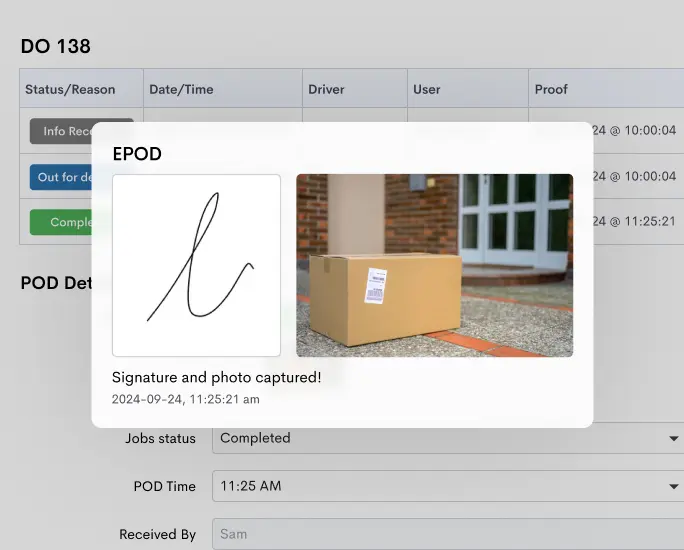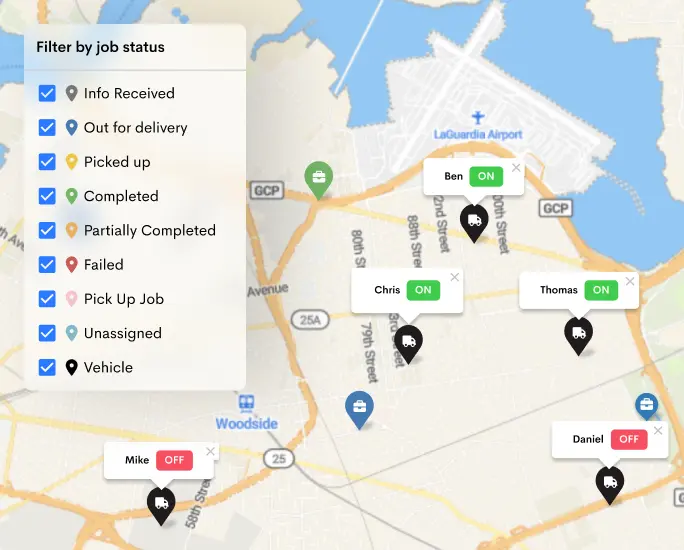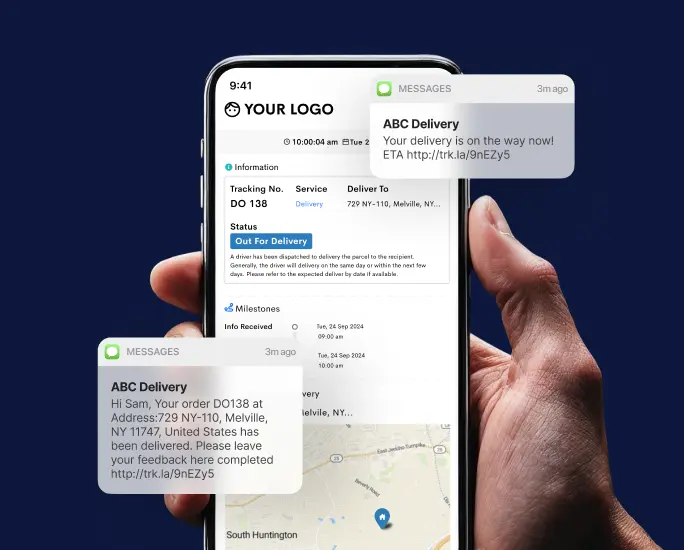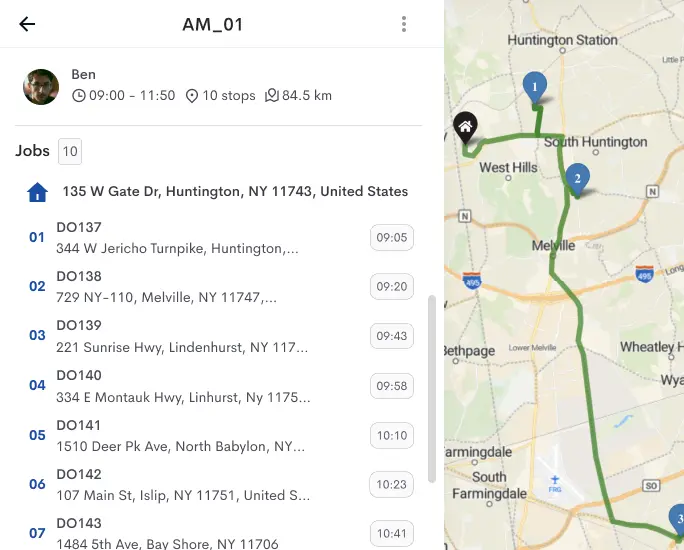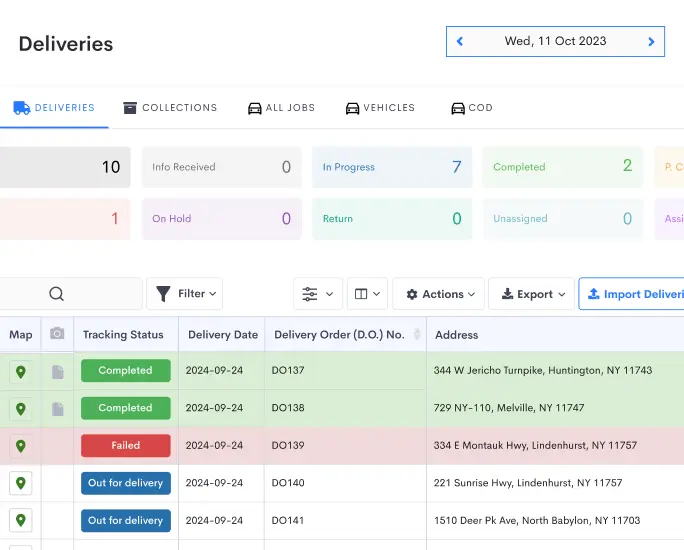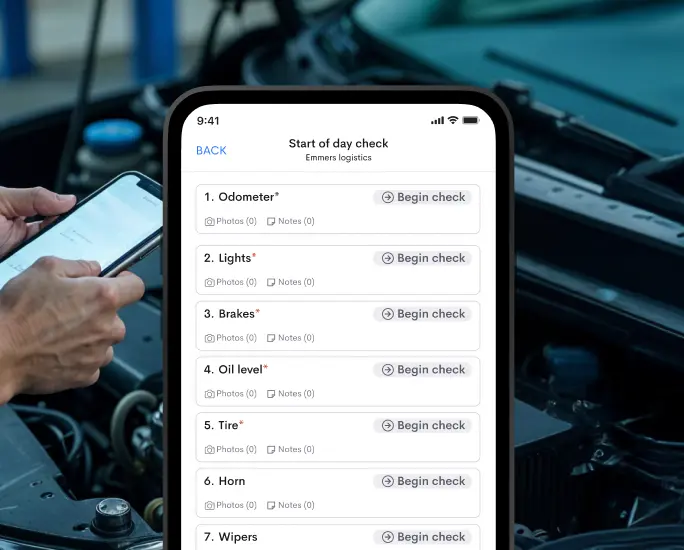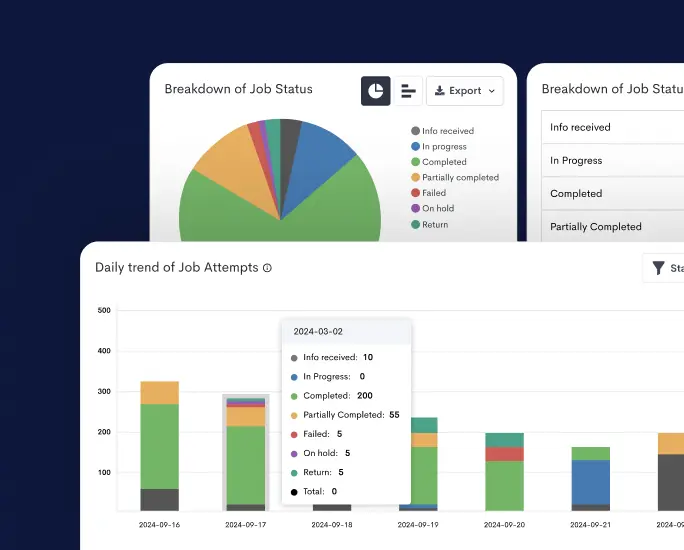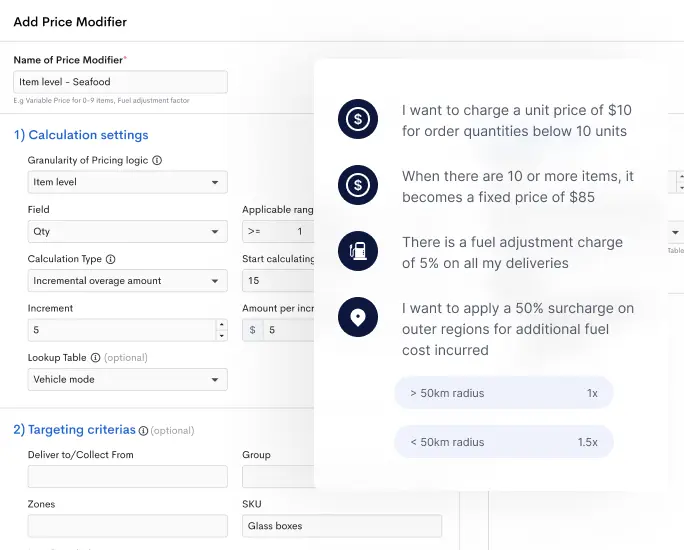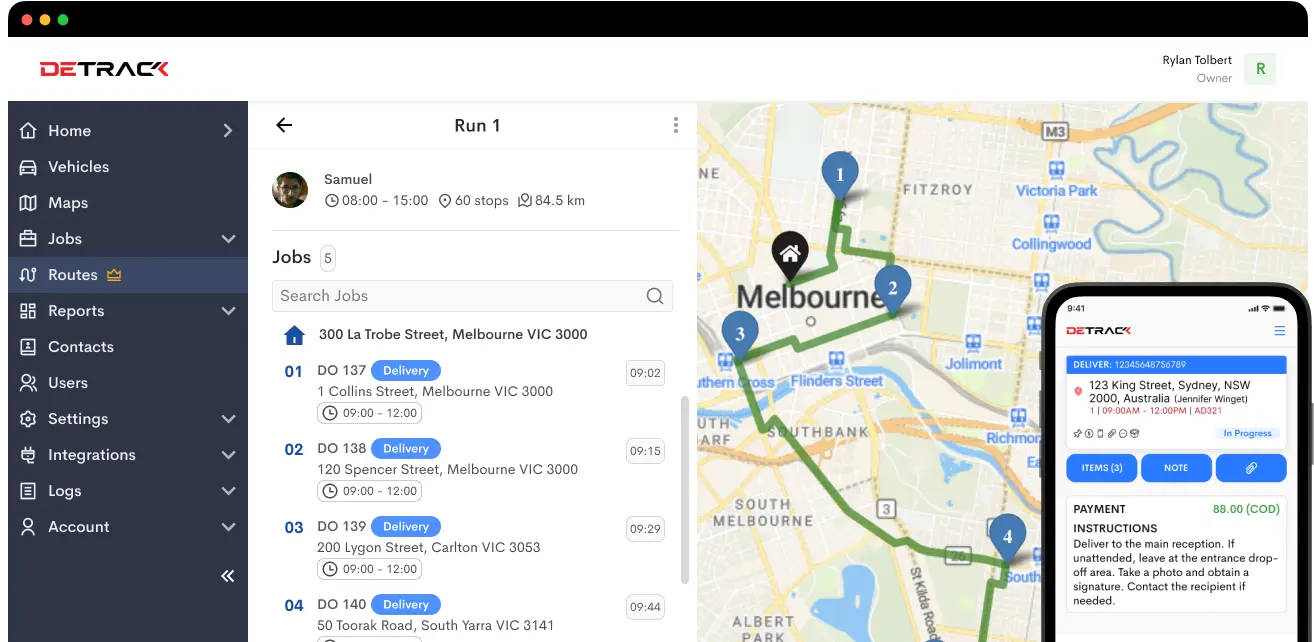Vehicle safety is a top priority for fleet managers, drivers, and businesses that rely on transportation. A pre-start vehicle checklist is a crucial tool that helps ensure vehicles are in optimal working condition before hitting the road. By systematically inspecting key components, businesses can reduce downtime, prevent costly repairs, and improve overall safety.
In this blog post, we’ll cover the ten critical checks that every pre-start vehicle checklist must include.
1. Tires and Wheels
Tires are the foundation of vehicle safety. Before starting a journey, drivers should inspect the following:
- Tire Pressure: Underinflated or overinflated tires can affect fuel efficiency and handling. Check the manufacturer’s recommended PSI and adjust accordingly.
- Tread Depth: Worn-out treads can lead to poor traction, especially in wet or icy conditions.
- Visible Damage: Look for cracks, cuts, bulges, or embedded objects that may cause a blowout.
- Wheel Condition: Ensure all lug nuts are secure, and there are no visible cracks or dents.
2. Brakes
Brakes are a critical safety component that must be checked before every trip. Inspect:
- Brake Pads and Discs: Listen for unusual sounds like squealing or grinding, which may indicate worn-out pads.
- Brake Fluid Levels: Low brake fluid can reduce braking efficiency and increase stopping distances.
- Handbrake Functionality: Test the parking brake to ensure it engages and disengages properly.
3. Lights and Indicators
Proper lighting is essential for visibility and communication with other drivers. Check:
- Headlights (Low and High Beam): Ensure they are functioning and correctly aligned.
- Brake Lights: Confirm that brake lights activate when the pedal is pressed.
- Turn Signals and Hazard Lights: Test both to avoid communication failures on the road.
- Fog and Reverse Lights: These are crucial in poor visibility conditions.
4. Fluids and Leaks
Vehicles rely on various fluids for optimal performance. Inspect:
- Engine Oil: Check the level and look for any signs of contamination or leaks.
- Coolant: Ensure there’s enough coolant to prevent engine overheating.
- Transmission Fluid: Low or dirty transmission fluid can lead to gear-shifting issues.
- Power Steering Fluid: A drop in level may indicate a leak in the system.
- Windshield Washer Fluid: Helps maintain visibility by keeping the windshield clean.
5. Battery Health
A dead battery can cause unexpected delays. Before starting the vehicle, check:
- Battery Terminals: Ensure they are clean, corrosion-free, and securely connected.
- Charge Level: Use a voltmeter to check battery voltage.
- Visible Damage: Look for cracks, leaks, or bulges in the battery casing.
6. Mirrors and Windows
Good visibility is crucial for safe driving. Inspect:
- Side and Rearview Mirrors: Adjust them properly and check for cracks or damage.
- Windows and Windshield: Ensure they are clean and free from obstructions or cracks that can impair vision.
- Wipers and Washer System: Test wipers to confirm they function correctly and replace worn-out blades.
7. Horn and Warning Systems
The horn and warning lights help alert other drivers and pedestrians. Check:
- Horn Sound: Ensure it is loud and clear.
- Dashboard Warning Lights: When the engine is turned on, look for any warning indicators that stay on.
- Backup Alarms (if applicable): Essential for large vehicles and trucks to warn pedestrians and other drivers.
8. Suspension and Steering
A vehicle’s suspension and steering affect handling and comfort. Inspect:
- Steering Wheel Play: Excessive play may indicate issues with the steering rack.
- Suspension Components: Listen for unusual noises like clunks or squeaks while turning.
- Shock Absorbers: Worn-out shocks can cause poor vehicle stability.
9. Emergency and Safety Equipment
Every vehicle should be equipped with emergency tools to handle unexpected situations. Ensure the presence of:
- Fire Extinguisher: Fully charged and easily accessible.
- First Aid Kit: Stocked with essential medical supplies.
- Reflective Triangles or Flares: Useful in breakdown situations to alert other drivers.
- Spare Tire, Jack, and Lug Wrench: Essential for handling flat tires.
10. Fuel and Exhaust System
Checking the fuel and exhaust system prevents breakdowns and emissions issues. Inspect:
- Fuel Level: Ensure there’s enough fuel for the journey.
- Fuel Cap: Securely fastened to prevent fuel evaporation.
- Exhaust System: Look for excessive smoke, strange noises, or leaks indicating system failure.
Final Thoughts
A pre-start vehicle checklist is a simple yet powerful tool that can prevent costly repairs, enhance driver safety, and ensure vehicles remain roadworthy. By consistently performing these ten critical checks, businesses and drivers can reduce risks and operate more efficiently.
Implementing digital solutions like Detrack can streamline vehicle inspections by automating reports and tracking maintenance schedules. Try Detrack today and take your vehicle safety to the next level!

